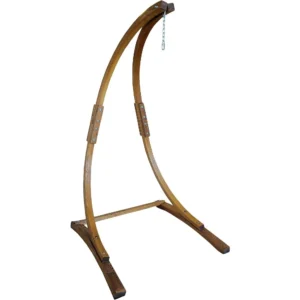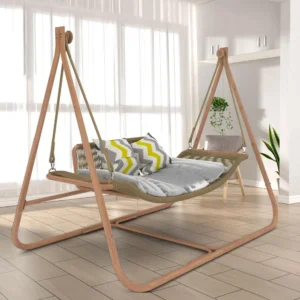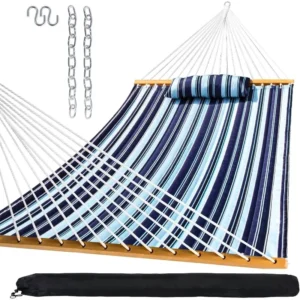Introduction: Why Your Hammock Frame Choice Matters
The foundation of any relaxing hammock experience begins with the frame that supports it. Choosing the right heavy-duty hammock frame isn’t just about aesthetics—it’s about creating a safe haven where you can unwind without worry. An inadequate frame can lead to sudden collapses, frequent replacements, and even injuries that interrupt your peaceful moments.
This comprehensive guide will walk you through the essential features that separate truly dependable hammock frames from those that merely claim to be “heavy-duty.” You’ll learn how to identify quality construction, evaluate weight capacities, and understand which specific features best match your relaxation needs.
The difference between standard and heavy-duty frames is substantial—where typical frames support around 300 pounds, true heavy-duty options can safely hold 600 pounds or more. This significant difference affects everything from durability to versatility.
At Outside Luxe, we’ve seen how proper indoor outdoor hammock placement contributes to both safety and enjoyment. Our expertise in premium hammock solutions has taught us which features truly matter when selecting a frame that will provide years of reliable relaxation.
If you’re ready to invest in quality, browsing our heavy-duty hammock sets can give you a sense of what premium features look like in action.
Decoding “Heavy-Duty”: What Makes a Hammock Frame Truly Superior
“Heavy-duty” is more than just a marketing term when it comes to hammock frames. A genuinely robust frame incorporates specific design elements and material qualities that separate it from standard options.
A truly heavy-duty hammock frame is defined by:
- Material thickness and grade (like 12-gauge steel instead of thinner 16-gauge)
- Reinforced connection points that distribute weight evenly
- Weight capacities starting at 450 pounds and extending to 800+ pounds
- Wider, more stable base footprints for tip-resistance
- Professional-grade welding with complete penetration
- Corrosion-resistant finishes and weather-hardy materials
The investment in a quality heavy-duty frame translates directly into longevity—often providing 10+ years of service compared to the 2-3 years typical of standard frames. This long-term value comes from intentional engineering rather than superficial attributes.
Understanding proper hammock installation requirements and safety guidelines helps ensure you get the most from your heavy-duty frame investment.
I. The Pillars of Strength: Core Material and Construction Features
1. Material Mastery: Choosing the Right Foundation
The material of your hammock frame fundamentally determines its strength, weight, and durability. Each option offers distinct advantages worth considering:
Steel Construction
– Heavy-gauge steel (12-14 gauge) offers superior weight capacity (600-800+ lbs)
– Powder coating provides essential protection against rust and corrosion
– Tubular designs with 1.5-2 inch diameters offer optimal strength-to-weight ratio
– Requires minimal maintenance when properly finished
– Typically weighs 35-70 pounds depending on design
Wooden Construction
– Hardwoods like cypress and oak offer natural beauty with good durability
– Pressure-treated options resist insects and moisture
– Marine-grade varnishes extend outdoor lifespan significantly
– Typically supports 400-600 pounds depending on design
– Requires seasonal maintenance to maintain finish and prevent cracking
Aluminum Construction
– Aircraft-grade aluminum (6061-T6) provides excellent strength at lower weight
– Naturally corrosion-resistant without additional treatments
– Typically supports 350-500 pounds depending on thickness and design
– Weighs 40-60% less than comparable steel frames (15-30 pounds)
– Ideal for portable or semi-permanent installations
The most durable materials used in spreader bar hammocks share many characteristics with quality frame materials, as both must withstand similar stresses and environmental challenges.
2. Weight Capacity: The Critical Safety Metric
Weight capacity represents the most critical safety specification for any hammock frame. Manufacturers determine these ratings through stress testing under static and dynamic loads, with quality brands adding safety margins to their stated capacities.
| Weight Capacity | Recommended Usage | Safety Margin |
|---|---|---|
| 300-400 lbs | Single adult | Moderate |
| 450-550 lbs | Adult plus child or pet | Good |
| 600-700 lbs | Two adults | Excellent |
| 700+ lbs | Multiple users or heavy individuals | Superior |
Always select a frame with at least 100 pounds more capacity than you anticipate needing. This extra margin accommodates movement, unexpected additional weight, and provides insurance against material fatigue over time.
The correlation between material choice and weight capacity is direct—heavier gauge metals, larger diameters, and reinforced joints all contribute to higher safe working loads. For shared relaxation, our double two-person hammock sets are engineered with enhanced weight capacities.
3. Superior Construction & Weld Integrity
The quality of construction—particularly welding—often determines whether a frame will last seasons or decades. Professional-grade frames feature:
- 360-degree welding at all critical joints (not spot welds)
- Smooth, consistent welds with proper penetration
- Reinforced stress points at suspension and base connections
- Tubing with 1.5-2 inch diameters and 1/8-inch wall thickness
- Gusset plates at angled joints for additional strength
When evaluating a frame’s construction quality, look for:
– Uniform welds without pitting, bubbles, or gaps
– Reinforcement plates at key stress points
– Absence of sharp edges that could indicate rushed manufacturing
– Consistent powder coating or finish without thin spots
– Hardware made from the same quality material as the frame itself
Proper attention to these construction details directly impacts safety, making indoor outdoor hammock safety an essential consideration when selecting a frame.
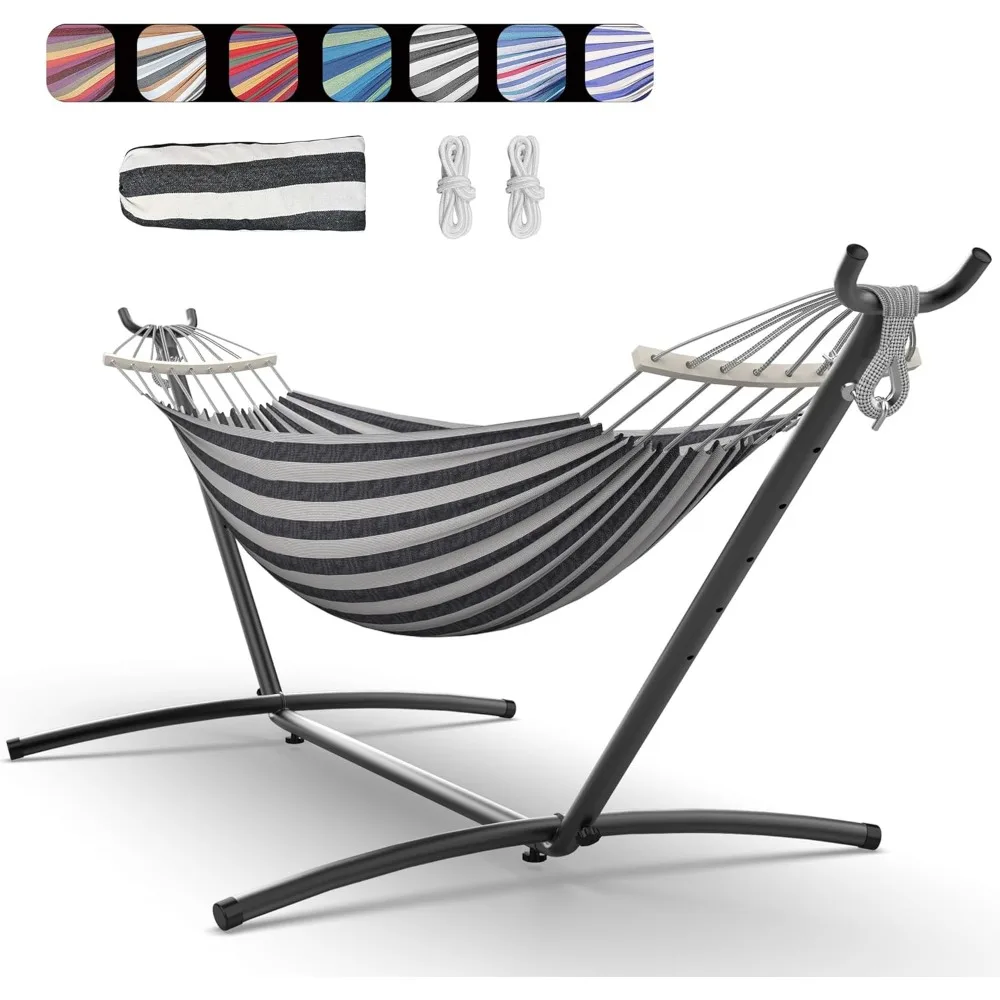
II. Ensuring Rock-Solid Stability & User Safety
1. Expansive Base & Optimal Footprint
A hammock frame’s stability begins with its footprint—the area it covers on the ground. Superior frames incorporate:
- Width-to-height ratios of at least 1:2 for optimal stability
- Base widths of 36-48 inches for standard 12-foot frames
- Expanded footprints on taller designs to prevent tipping
- Strategic weight distribution that centers gravity within the base
- Ground clearance of 12-18 inches that balances stability with comfort
Different surfaces require specific considerations: frames used on grass benefit from wider feet to prevent sinking, while those on decks need non-marring materials to prevent damage. Anti-tip designs often incorporate lower profiles or extended bases at key stress points.
For especially stable options, our A-frame stand hammock sets provide geometrically optimized designs that maximize stability even with active movement.
2. Non-Slip Feet and Protective Caps
The points where your hammock frame meets the ground significantly impact both stability and the longevity of the frame itself. Quality frames feature:
- High-density rubber feet that resist UV degradation
- 2-3 inch diameter contact points for weight distribution
- Non-marking materials for use on delicate surfaces
- Textured undersides that increase friction on smooth surfaces
- Moisture-resistant designs that prevent water absorption
Different environments call for specialized feet:
– Outdoor permanent installation: Spiked or flanged feet that can be anchored
– Indoor use: Felt-lined or soft rubber to protect flooring
– Multi-surface use: Adaptable feet with interchangeable tips
– Uneven terrain: Independently adjustable feet for leveling
Understanding whether it’s okay to leave your hammock outside helps determine which protective features your frame needs for long-term durability.
3. Secure and Reliable Connection Systems
The connection points between frame components and the hammock itself represent critical safety zones that require careful engineering:
- Spring-snap buttons made from hardened steel resist wear and accidental release
- Stainless steel hardware (minimum Grade 5/8.8) prevents rust-related failures
- S-hooks and chains with minimum 3/16-inch thickness provide ample strength margin
- Carabiners rated for 2,000+ pounds offer safety redundancy
- Locking mechanisms prevent accidental disconnection during use
Quality connections are also designed to minimize noise during use—preventing the squeaking and rattling that often plague cheaper frames. The connection systems used in framed hammocks with spreader bars showcase how different hammock styles require specialized attachment methods.
4. Frame Geometry and Design Influence
The overall shape of a hammock frame significantly impacts its stability, space efficiency, and weight capacity:
A-Frame Design
– Excellent inherent stability from triangular geometry
– Typically supports 450-700+ pounds
– Efficient use of materials for strength
– Requires moderate floor space (approximately 4×9 feet)
Arc/Curved Design
– Aesthetically pleasing appearance
– Good stability with proper base width
– Typically supports 400-600 pounds
– Often allows for height adjustability
C-Stand Design
– Space-efficient footprint
– Good for smaller spaces or corner placement
– Typically supports 300-500 pounds
– Often features single-side entry
Tri-Beam Design
– Superior stability in all directions
– Highest weight capacities (often 700+ pounds)
– Requires larger floor space
– Ideal for permanent installations
For specialized relaxation options, hammock chairs with stands incorporate unique geometries that maximize stability within compact footprints.
III. Practicality and User-Friendly Features
1. Ease of Assembly and Disassembly
The best hammock frames balance durability with practical setup and takedown features:
- Tool-free assembly systems save time and eliminate the need for extra equipment
- Snap-lock mechanisms allow for 5-15 minute setup compared to 20-30 minutes for traditional hardware
- Color-coded or numbered components prevent confusion during assembly
- Illustrated instructions with minimal text overcome language barriers
- Pre-assembled sections reduce the number of individual connections required
Premium frames incorporate design features that maintain strength while simplifying assembly:
– Integrated alignment guides ensure proper positioning
– Self-locking connections that confirm proper engagement with audible clicks
– Recessed hardware that won’t snag hammocks or clothing
– Logical assembly sequences that can be completed by one person
For maximum convenience, our quick-setup hammock sets feature innovative designs that prioritize both ease of assembly and structural integrity.
2. Portability and Storage Solutions
Even permanent hammock frames benefit from thoughtful portability and storage features:
- Steel frames typically weigh 30-70 pounds, while aluminum alternatives range from 15-25 pounds
- Quality carrying cases use reinforced stitching at stress points and padded straps
- Modular breakdown allows for compact storage—typically reducing length by 60-80%
- Weather-resistant storage bags prevent moisture damage during off-season storage
- Integrated wheels on heavier frames facilitate repositioning without disassembly
The most portable designs include:
– Segmented poles that break down to 2-3 foot sections
– Quick-release connections that don’t sacrifice strength
– Balanced weight distribution in carrying configuration
– Protective caps that prevent damage during transport
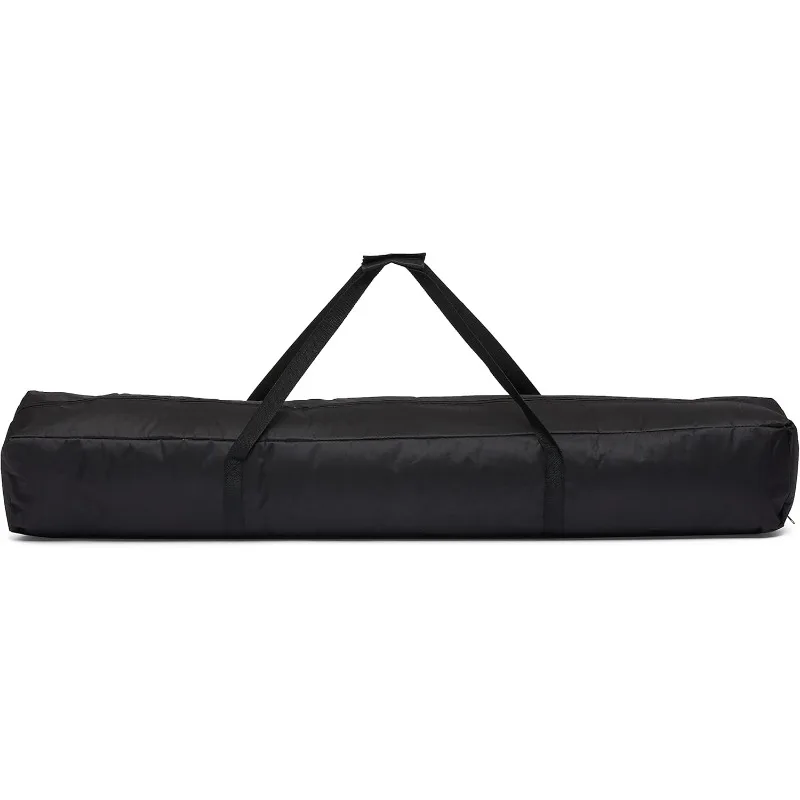
For those who value flexibility in their relaxation options, understanding transport-friendly hammock features can guide your selection process.
3. Adjustability and Hammock Compatibility
Versatile hammock frames accommodate different users and hammock styles through adaptive features:
- Length adjustment mechanisms typically offer 9-14 foot ranges
- Height adjustability from 40-60 inches allows customization for comfort and entry ease
- Multiple hanging points accommodate different hammock styles and lengths
- Convertible designs support both spreader bar and gathered-end hammocks
- Suspension systems that include both chains and ropes for different preferences
| Hammock Style | Ideal Frame Type | Key Compatibility Features |
|---|---|---|
| Brazilian/Gathered End | Arc or A-frame | Extended hanging points, chain length adjustment |
| Spreader Bar | A-frame or Tri-beam | Fixed width supports, reinforced end connections |
| Rope Hammock | Wide-base designs | Increased tension capability, corrosion-resistant hardware |
| Camping Hammocks | Portable A-frames | Lightweight materials, compact folding design |
For specific style compatibility, our spreader bar hammock sets include frames specially designed for this popular hammock type.
Dark Wood Hammock Sets, Porch Swing Chair Sets
$653.82 Select options This product has multiple variants. The options may be chosen on the product pageA-Frame Stand Hammock Sets, Swinging Hammock Chair Sets
$154.62 Select options This product has multiple variants. The options may be chosen on the product pageLight Wood Hammock Sets, Swinging Hammock Chair Sets
$1,359.35 Select options This product has multiple variants. The options may be chosen on the product pageClassic Wooden Stand Hammock Sets, Heavy Duty Hammock Sets
$1,061.68 Select options This product has multiple variants. The options may be chosen on the product pageHammock Sets with Canopy, Heavy Duty Hammock Sets
$286.31 Select options This product has multiple variants. The options may be chosen on the product page
IV. Weather Resistance and Long-Term Durability Features
1. Advanced Material Coatings and Treatments
Weather resistance determines whether your hammock frame will last seasons or decades when used outdoors:
- Professional powder coating provides 3-4 mil thickness compared to 1-2 mil for standard paint
- Multi-stage coating processes include phosphate treatment, primer, and UV-resistant topcoat
- Specialized coatings address specific environmental challenges:
- Salt-resistant formulations for coastal areas
- UV stabilizers for sunny regions
- Anti-fungal additives for humid climates
- Quality hardware incorporates galvanized or stainless steel for rust prevention
- Non-metal components include UV inhibitors to prevent cracking and color fading
Warranty length often correlates directly with coating quality—frames with 5+ year warranties typically feature superior weather protection. Understanding the differences between camping and home hammock requirements helps determine which protective features matter most for your intended use.
2. Protective End Caps and Moisture Prevention
Small details often make the biggest difference in long-term durability:
- High-quality end caps prevent water intrusion that leads to internal rust
- UV-resistant plastic compounds withstand sun exposure without becoming brittle
- Ventilation designs allow condensation to escape while keeping rain out
- Drain holes in horizontal members prevent water pooling
- Elevated designs keep frame components away from ground moisture
The best frames incorporate protective features that require minimal maintenance:
– Self-draining geometries that don’t collect water
– Seamless joints that prevent moisture penetration
– Replaceable wear components that extend the frame’s overall lifespan
– Complete coverage of cut tube ends to prevent moisture wicking
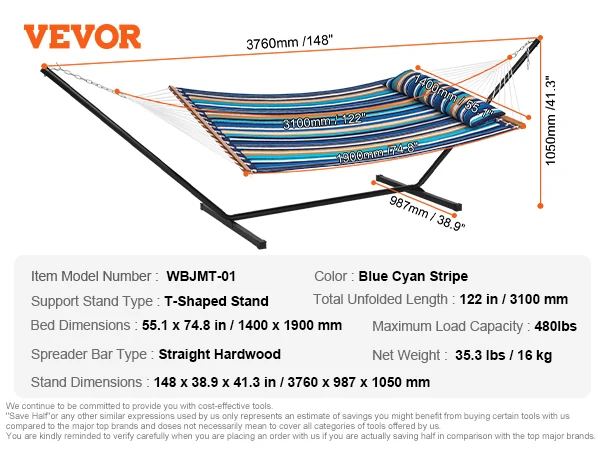
V. Design and Aesthetic Appeal
Beyond pure functionality, premium hammock frames contribute to your outdoor or indoor décor:
- Architectural styles range from minimalist modern to ornate traditional designs
- Finish options extend beyond basic black to include textured bronze, brushed nickel, or vibrant colors
- Wood frames offer natural grain patterns enhanced by transparent finishes
- Curved elements add visual interest while maintaining structural integrity
- Decorative end caps transform functional components into design features
Different settings benefit from specific frame aesthetics:
– Garden spaces: Organic curves and earth tones that complement natural surroundings
– Poolside areas: Clean lines with moisture-resistant finishes
– Patios and decks: Designs that complement existing outdoor furniture
– Indoor spaces: Refined finishes that transition outdoor relaxation to interior settings
For inspiration on incorporating hammock frames into your outdoor spaces, explore our ideas for garden design with hammock frames.
VI. Essential Checklist: What to Verify Before You Buy
Before finalizing your heavy-duty hammock frame purchase, verify these critical elements:
Space Requirements
– Measure your intended location (add minimum 2 feet beyond frame length for clearance)
– Confirm ceiling height for indoor installations (minimum 7.5 feet for most frames)
– Verify surface is level or can be adjusted with frame features
Compatibility Verification
– Check your hammock length against frame hanging points
– Confirm suspension system works with your hammock type
– Verify that hanging hardware matches hammock end design
Weight Capacity Assessment
– Calculate total weight (users plus hammock)
– Add 100-150 pound safety margin
– Confirm dynamic (moving) weight rating, not just static
Construction Quality Indicators
– Examine weld quality and completeness
– Verify material thickness meets heavy-duty standards
– Check coating quality and coverage
Practical Considerations
– Evaluate assembly complexity against your comfort level
– Consider storage space during off-seasons
– Assess portability needs for your intended use
Ask yourself: “Will this frame meet my needs for at least 5 years?” If the answer isn’t an immediate yes, continue your search for a truly heavy-duty option.
Conclusion: Investing in Years of Secure Relaxation
A truly heavy-duty hammock frame represents an investment in countless hours of worry-free relaxation. The features we’ve explored—robust materials, superior construction, thoughtful stability design, and user-friendly elements—combine to create a foundation you can trust for years to come.
While premium frames require a higher initial investment, their extended lifespan of 10+ years makes them far more economical than replacing cheaper alternatives every few seasons. More importantly, the peace of mind that comes from knowing your frame won’t fail during use is priceless.
As you evaluate options, remember that weight capacity and construction quality should always take precedence over less critical features. Prioritize safety first, durability second, and convenience features third for the most satisfying long-term purchase.
With the right heavy-duty hammock frame, your relaxation space becomes not just a temporary retreat but a permanent sanctuary for unwinding in complete security.


